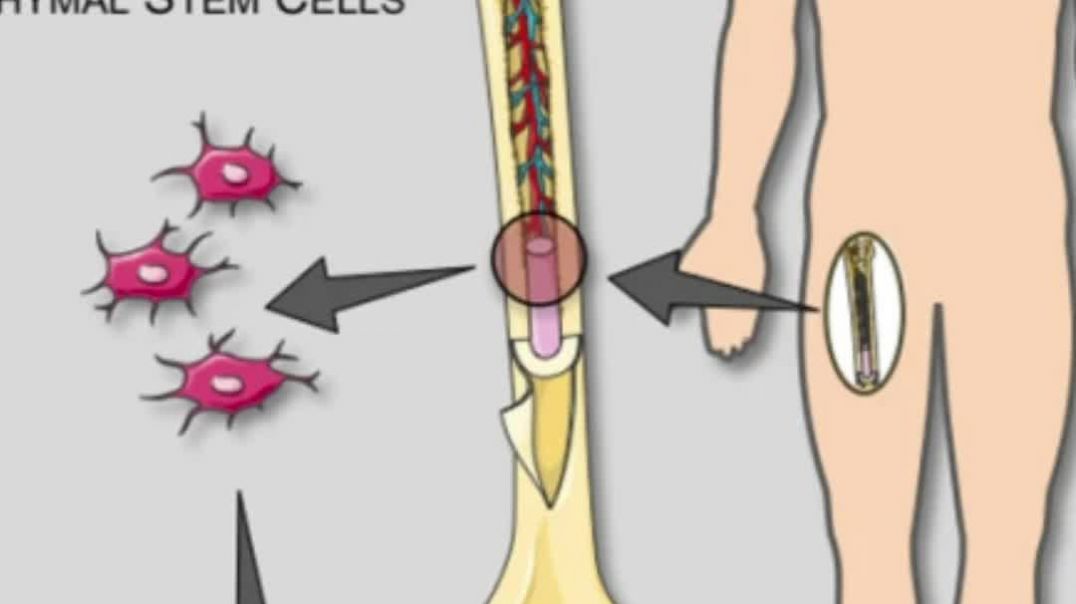Multiple Myeloma - Everything You Need To Know - Dr. Nabil Ebraheim
Dr. Ebraheim’s educational animated video describes multiple myeloma.
Multiple myeloma is cancer of the plasma cells. It is malignant proliferation of the plasma cells. Plasma cells are a type of blood cells that produce antibodies. Antibodies are an important part of the immune system that fights infection.
Multiple myeloma cells produce a single protein – Monoclonal protein, M protein. Multiple myeloma occurs more often in males and twice as often in African Americans. It usually occurs in patients older than 40 years of age. Multiple myeloma is the most common primary malignant bone tumor.
The plasma cells secrete osteoclast activating factors such as interleukin 6, macrophages and inflammatory factors in addition to RANKL. Osteoclasts are recruited, activated and they multiple. Osteoclasts absorb the bone. The osteoblast bone formation is suppressed by the tumor necrosis factor (why there is a cold bone scan in multiple myeloma). In about 30%, the bone scan is negative. Get a skeletal survey.
Clinical features: Useful mnemonic to help remember the most common features of multiple myeloma is CRAP, which stands for hypercalcemia, Renal failure, Anemia, and back Pain. Clinical features will be insidious presentation. Bone pain, especially back pain with possible fractures, weakness and fatigue, cord compression, infections and fever. Multiple myeloma can occur in any bone although it occurs more in the hematopoietic bone marrow!
Labs: Sedimentation rate may be elevated. May find renal insufficiency, hypercalcemia, and anemia. Electrophoresis will find a spike in the serum, in the urine, or in both. Serum Protein ElectroPhoresis (SPEP) detects monoclonal elevation of the immunoglobulin and identifies the protein types that are present. Urine Protein ElectroPhoresis (UPEP) – bence jones proteinuria (urine) and light chains (about 95% sensitivity).
What are the tumor markers that indicate a bad prognosis? Increased serum beta1-microglobulin level and a decreased serum albumin.
How do you establish the diagnosis? One major and one minor criteria is needed or three minor criterion.
What are the major criteria? The major criteria are plasmacytoma tissue diagnosis on biopsy, more than 30% plasma cells in the bone marrow, SPEP with great value for IgG or IgA and/or UPEP (Bence Jones Proteinuria).
The minor criteria are 10% - 30% plasma cells in the bone marrow, monoclonal protein in the serum or the urine (SPEP/UPEP – these values are usually lower than in the major criteria), multiple “punched-out” lytic bone lesions, end-organ damage (renal insufficiency, hypercalcemia, and anemia), and lower than normal IgG levels.
Images: Images will usually show “punched-out” lytic lesions throughout the skeleton. Radiolucent lesions or destructive lesions with no sclerosis (skull lesions and vertebral fractures). Osteopenia is common. There will be a negative bone scan. Minimal osteoblastic activity with multiple myeloma due to the tumoral necrosis factor. Skeletal survey can be used. Sometimes a magnetic resonance imaging (MRI) or positron emission tomography (PET) scan may be used. Bone scans are generally not done in cases of multiple myeloma (bone scans will be cold).
Pathology: Sheets of plasma cells, Eccentric nucleus (clock faced), Signet-ring appearance, Perinuclear clearing, Abundant eosinophilic cytoplasm.
Treatment: Usually high-dose chemotherapy. Radiation treatment for progressive lesions, structurally important lesions, or radiation is used to decrease pain. Bone marrow transplant (usually in younger patients). Bisphosphonate decreases bone pain, calcium and the number of lesions. Surgical stabilization is used for prophylactic fixation or prevention of pathological fractures. It can also be used for the treatment of fractures.
Become a friend on facebook:
http://www.facebook.com/drebraheim
Follow me on twitter:
https://twitter.com/#!/DrEbraheim_UTMC
Donate to the University of Toledo Foundation Department of Orthopaedic Surgery Endowed Chair Fund:
https://www.utfoundation.org/f....oundation/home/Give_





















SORT BY-
أعلى تعليقات
-
أحدث تعليقات